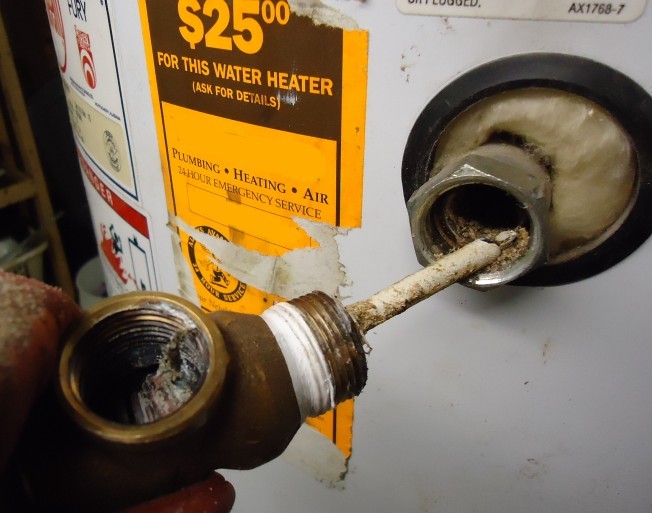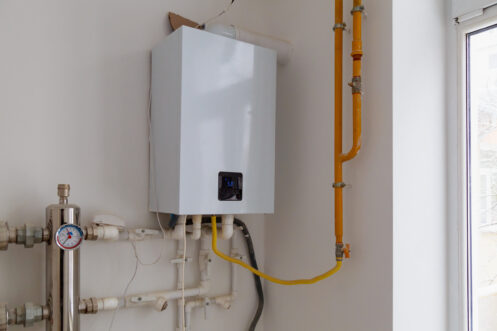Best Practices for Maintaining Your Home's Hot Water System
Best Practices for Maintaining Your Home's Hot Water System
Blog Article
On this page below you will discover a good deal of amazing ideas with regards to What Kind of Maintenance Do Water Heaters Need?.

Warm water is essential for everyday comfort, whether it's for a refreshing shower or cleaning meals. To ensure your hot water system runs effectively and lasts much longer, routine upkeep is essential. This write-up gives functional ideas and understandings on exactly how to keep your home's hot water system to avoid disturbances and costly fixings.
Intro
Preserving your home's hot water system may seem difficult, yet with a few easy actions, you can guarantee it operates efficiently for several years to come. This overview covers every little thing from understanding your hot water system to do it yourself upkeep suggestions and knowing when to employ specialist help.
Significance of Preserving Your Warm Water System
Normal upkeep not just extends the life expectancy of your hot water system yet likewise ensures it operates successfully. Ignoring upkeep can cause decreased performance, higher energy expenses, and also early failing of the system.
Indications Your Warm Water System Needs Maintenance
Knowing when your hot water system needs interest can avoid major problems. Watch out for indications such as irregular water temperature level, odd sounds from the heater, or rusty water.
Flushing the Water Heater
Flushing your water heater removes sediment buildup, boosting performance and lengthening its life.
Monitoring and Changing Anode Rods
Anode poles protect against deterioration inside the container. Checking and changing them when worn is critical.
Facility Concerns Needing Expert Assistance
Examples consist of significant leakages, electrical problems, or if your water heater is regularly underperforming.
Routine Specialist Upkeep Conveniences
Expert maintenance can consist of detailed examinations, tune-ups, and making sure compliance with safety criteria.
Examining and Adjusting Temperature Level Setups
Adjusting the temperature setups guarantees optimal efficiency and safety and security.
Do It Yourself Tips for Upkeep
You can carry out a number of maintenance jobs on your own to keep your hot water system in leading problem.
Looking for Leaks
Routinely inspect pipes and connections for leaks, as these can cause water damage and higher expenses.
Comprehending Your Warm Water System
Prior to diving into upkeep jobs, it's handy to recognize the basic parts of your hot water system. Generally, this consists of the water heater itself, pipes, anode poles, and temperature controls.
Month-to-month Maintenance Tasks
Regular month-to-month checks can help catch small problems before they rise.
Checking Pressure Alleviation Valves
Checking the pressure safety valve guarantees it functions correctly and stops excessive pressure build-up.
Insulating Pipes
Protecting warm water pipes lowers heat loss and can save power.
When to Call a Professional
While DIY upkeep is advantageous, some problems require expert proficiency.
Final thought
Normal upkeep of your home's hot water system is necessary for efficiency, long life, and price savings. By following these ideas and recognizing when to seek professional assistance, you can ensure a reputable supply of warm water without unanticipated disruptions.
How to Maintain an Instant Hot Water Heater
Before tinkering with your hot water heater, make sure that it’s not powered on. You also have to turn off the main circuit breaker and shut off the main gas line to prevent accidents. Also turn off the water valves connected to your unit to prevent water from flowing into and out of the appliance. 2. When you’re done, you have to detach the purge valves’ caps. These look like the letter “T†and are situated on either side of the water valves. Doing so will release any pressure that has accumulated inside the valves while at the same time avoid hot water from shooting out and burning your skin. 3. When the purge valves’ caps are removed, you have to connect your hosing lines to the valves. Your unit should have come with three hoses but if it didn’t, you can purchase these things from any hardware or home repair shops. You can also get them from retail stores that sell water heating systems. Read the user’s manual and follow it to complete this task properly. When the hosing lines are connected, open the purge port’s valves. 4. You should never use harsh chemical cleaners or solutions when cleaning your unit. Make use of white vinegar instead. It should be undiluted and you’ll probably use about 2 gallons. 5. Now flush your water heater. This task should probably take about 40 minutes. We can’t give you specific directions for this because the procedure is carried out depending on the type, model and brand of your heater. With that being said, refer to the user’s manual. 6. When you’re done draining the unit, you have to turn off the purge port valves again. Remove the hosing lines that you earlier installed on each of the water valves. Put the valve caps (purge port) back in their respective places and be very careful so as not to damage the rubber discs that are found inside these caps. 7. Now that everything’s back in place, check your user’s manual again to find out how to reactivate your water heating system. 8. Once it is working, turn one of your hot water faucets on just to let air pass through the heater’s water supply pipes. Leave the tap on until water flows smoothly out of it. https://www.orrplumbing.com/blog/2014/september/how-to-maintain-an-instant-hot-water-heater/

As a person who reads about How to Maintain Your Water Heater & Prolong its Life, I figured sharing that article post was a good thing. Enjoyed reading our piece? Please quickly share it. Let somebody else find it. Many thanks for going through it.
Book-Now Report this page